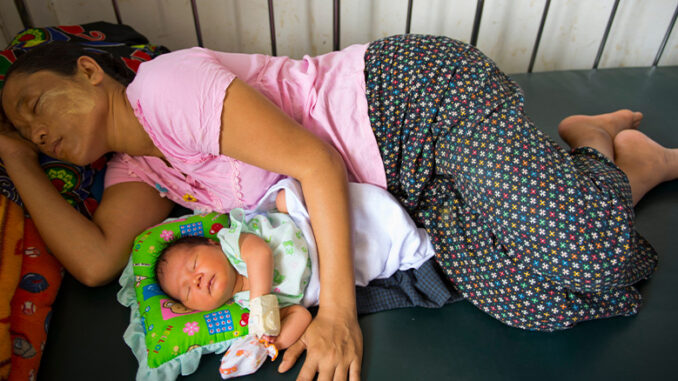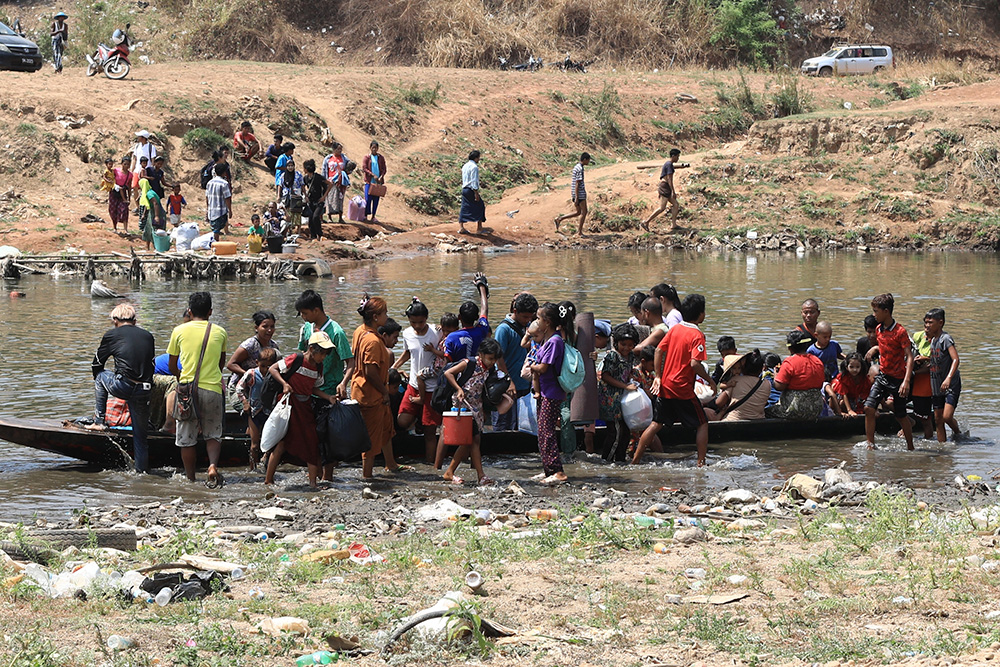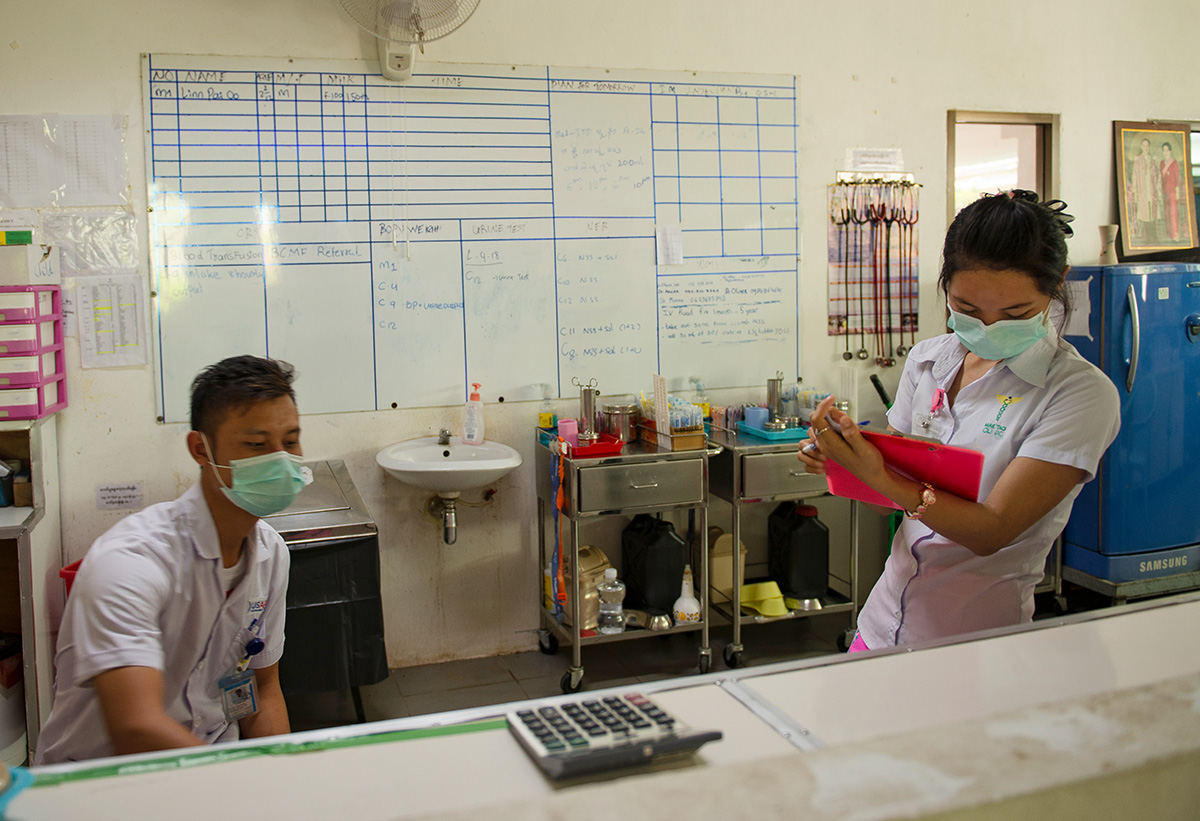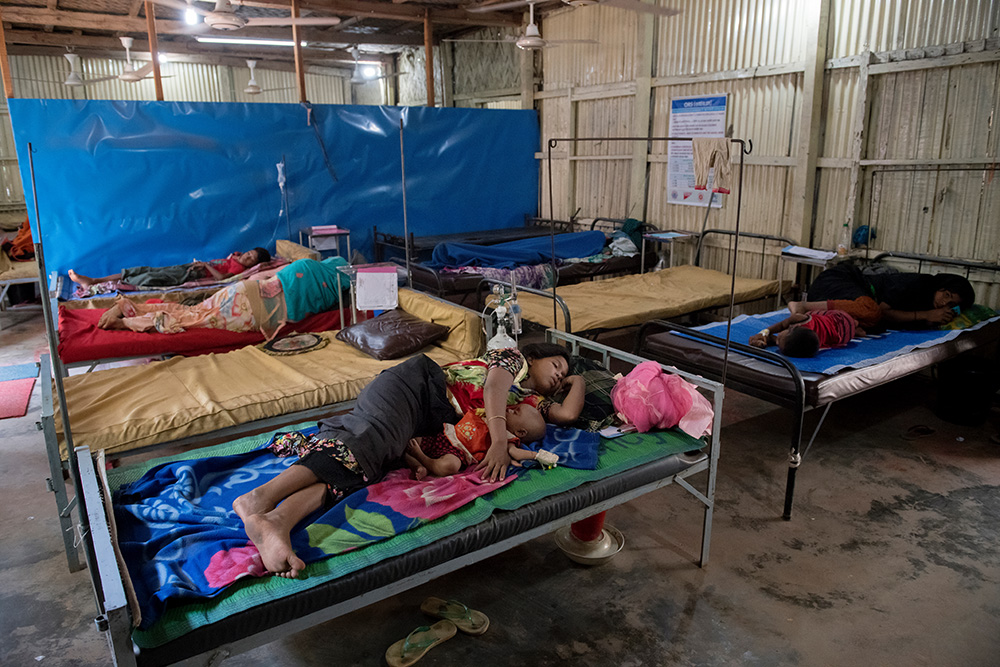
The 47th Southeast Asia Seminar offered an excellent opportunity to expand my focus from displaced Rohingya refugee families in South and Southeast Asia borderlands to gain a deeper understanding of different displaced groups in the Thai-Myanmar borderlands. Instead of focusing on Rohingya as refugees, I reframe my focus towards undocumented people’s lives in general to examine who cares for and/or takes care of their displaced families on both the Thai and Bangladesh sides of the border with Myanmar. Investigating “undocumented” people moves beyond an emphasis on ethnic and/or religious differences, which are often used to frame research projects in border areas. The term “undocumented” is further used to describe those who are “in different ways and to different degrees” illegalized (Krause, 2011, p. 22), or in other words: outcast. 1
For me, reflecting on the Seminar begs the questions: What is family and what is care? Is there a difference between who takes care of and who cares for undocumented families? The Oxford English Dictionary primarily defines “to take care of” as “to look after,” “to provide for,” and “to deal with,” whereas “to care for” also carries the meaning of “to take thought for.” This second meaning of “to care for” becomes more apparent through its negative, “not to care,” which means “not to trouble oneself” or “not to mind.” Hence, “to care for” might also mean “to mind.” Kleinman and van der Geest (2009) probe “care” not only in terms of its provision as practice, but further ask where the moral and emotional value of care is in healthcare. Moreover, the understanding of care as a moral duty and a practical obligation has influenced naturalized ideals of family. The problem is that family as a naturalized ideal is in tension with the divergent experiences and practices of families across various contexts (Hayami, 2012). One such context is that of undocumented people, many of whom have experienced (protracted) armed conflict, violence, and displacement. When acknowledging their experiences, the ideal of “the family” comes under duress.
As a keyword of the 47th Seminar was “health,” it led me to reconsider family vis-à-vis healthcare, specifically family planning programs and the idea of a “healthy” family. Family planning programs are concerned with birth control, sterilization, safe abortion, and pre- and postnatal care. The denial or provision of these healthcare services potentially determine the life and death of women and infants. They are central to the health of women and children and as such, they are part of human rights discourses (Erdman, DePiñeres, & Kismödi, 2013; Hardee et al., 2014). In the given context, many undocumented people are excluded from healthcare (Tschirhart et al., 2021) and therefore from family planning services. Second, during (protracted) armed conflict (Lewis, 2019) healthcare provision is severely impacted (Akik et al., 2020; Ojeleke et al., 2022). This situation becomes even more aggravated when healthcare provision is not only weaponized, but healthcare workers are actively targeted during (armed) conflict (Pannu, 2020; Jaehn, 2023). So, I raise the questions: Where is the care (as a moral value) in healthcare when family planning services are provided or denied to undocumented people who have suffered from armed conflict? Do providers care if undocumented people have “healthy” families?

The Thai-Myanmar Borderland
The Mae Tao Clinic (MTC) in the Thai border town of Mae Sot has gained a reputation for providing healthcare to thousands of undocumented people over several decades. Health posts set up by Mae Sot General Hospital also provide primary care to migrants. For secondary and tertiary healthcare, such as cesarean and emergency procedures, patients must go to a government hospital. These services are often unaffordable for many undocumented people and may cause them to fall into debt (Tschirhart et al., 2021). Nevertheless, both Mae Tao Clinic and the health posts of Mae Sot General Hospital provide undocumented women and girls with primary prenatal and postnatal care. Mae Tao Clinic further supports migrant women to deliver their babies safely and to document a child’s birth. The document may be submitted to the Bureau of Registration Administration for official registration of the child, although, as emphasized by the health staff working at MTC, this document is not an exact equivalent of the one issued by government hospitals. This act of documentation is an important service, as studies show that during armed conflict, fewer women give birth in hospitals or clinics and home birth rates increase, complicating birth registration (Akik et al., 2020; Ojeleke et al., 2022). Although undocumented women may no longer fear direct armed conflict while on the Thai side of the border, they may still be hesitant to go to a hospital to deliver their baby for fear of discrimination, lack of documentation, and the costs involved. Despite no longer providing abortions as a prenatal service (it offers only hospital referrals for this service), Mae Tao Clinic staff still offer post-abortion services. This potentially forces undocumented women and girls along the Thai-Myanmar borderland to resort to unsafe abortion methods. Providing post-abortion care but not safe abortion as a prenatal service puts healthcare workers in a position in which they must mend rather than being able to prevent harm inflicted on women and girls.

The Bangladesh-Myanmar Borderland
Along the Bangladesh-Myanmar border, I/NGOs within refugee camps are the main provider of family planning services. They provide birth control, sterilization, and safe abortion services to women and girls in the camp, and, if needed, refer them to an appropriate clinic or hospital. Midwives also support women in delivering their babies safely and providing pre- and postnatal care. However, they, as well as the I/NGOs that provide family planning, are routinely met with suspicion and hostility by some people staying in the refugee camps. Family planning programs provided by I/NGOs and the government of Bangladesh are not entirely in the interest of everyone in the refugee community, but rather reflect the interests of the host government and the I/NGOs. Although the general argument is made that with the provision of family planning programs, the government and I/NGOs “take care of” the rights and health of women and girls, these programs are not necessarily framed within a discourse of women’s rights over their own body. For example, driving towards the refugee camps in Bangladesh, I saw a poster on family planning that promoted that an X number of children would be “enough.” The poster seemed to refer to an imagination of a nuclear family of one husband and wife (father and mother) with a maximum of two (the X in the equation) children. The moment I saw the poster, its message did not sit right with me. I could not immediately pinpoint the reasons I felt uneasy about it. As I lingered on my puzzled feelings, the speeding taxi had already passed the poster and I forgot about it for a while.
In retrospect, I understand my unease about the poster a little bit better. The poster’s slogan suggests that family planning programs in Cox’s Bazaar are not only about ensuring “healthy families,” but also about preventing “too many” births. This indicates that family planning programs may be used as a method of population control. Hence, I cautiously propose that the message of the poster reflects demographic anxieties about the Rohingya in Bangladesh that they are an ever-growing refugee population putting a strain on the local population. Such anxieties are also propagated in Myanmar, but for a different reason, i.e., that Rohingya, a Muslim population, will soon outnumber Buddhists, endangering the imaginary of the Burmese nation (Kyaw, 2020). In its resonance with discourses in Myanmar, the message of the poster may further Rohingya’s religiously framed suspicions towards birth control. Along the Bangladesh-Myanmar border, family planning programs seem at least in part based on discriminatory biases toward the refugee population.
This reverberates with Davis (2003), who found that in the US, the birth control movement of the early 20th century took a racist turn under the influence of eugenics. Birth control became increasingly framed by a desire to control the black population, which in part explains black women’s hesitation to participate in the abortion rights movement of the 1970s. Abortions and infanticides by black women had been for a long time an act of desperation rather than empowerment as during slavery, the right over black women’s bodies had been with their masters. Arguing for birth control (and a maximum of two children) to control the size of refugee families in and around the Cox’s Bazaar camps hence uncomfortably echoes racist undertones and ignores Rohingya experiences with population control discourses in Myanmar. Moreover, I/NGO workers in the Bangladesh refugee camps justify the provision of abortion as a means of sparing girls from the shaming they may be confronted with as single mothers or from being forced to marry their rapist. While it is necessary to prevent these scenarios, providing safe abortion care under these premises does not help to undo the stigmatization that women and girls face due to premarital (forced or voluntary) sex. In contrast, the provision of an abortion under such a premise supports a single narrative of what a “healthy” family must look like. To allow a diversification of the idea of a “healthy” family, safe abortion services should come with support and awareness campaigns that offer alternative pathways for women and girls to create healthy families.

Concluding Thoughts and Outlook
When considering healthcare in terms of family planning, there are interests at stake that may collide, or not be aligned, with each other and yet they still demand the provision of the same services. The provision of family planning services by a certain actor does not necessarily mean that the actor cares for the interests of those who need the services or that the actor provides the services without any self-interest. It is therefore important to inform and provide undocumented people with family planning services free of coercion, as otherwise family planning policies and practices may result in human rights violations (Newman & Feldman-Jacobs, 2015; Hardee et al., 2014). As Krause (2011, p. 31) writes (referring to Hannah Arendt): “The undocumented should […] embody the concept of human rights more than anybody else” and, following her train of thought, they should have the right to decide how to re-make their own families. Yet, the undocumented tend to be denied both. Being outcasts, they unveil the aporia of human rights (Krause, 2011).
To conclude, by focusing on undocumented people’s families, we move away from a rigid ideal of a “healthy family” to see how family is constantly un-done by experiences of displacement, how families become “broken,” and how they are being bandaged, mended, and healed. This reveals tensions and frictions that may otherwise easily be glossed over. In this reflection, I focused on healthcare and family planning to open the door for a critical discussion of who takes care of (provides for) undocumented families and who cares for (minds) what kind of family exists among the undocumented, thus revealing that while healthcare and family planning can offer forms of protection, they also possess violent and sick (immoral) functions. Finally, I still owe an answer to the question of how to define care and family in the context of undocumented people’s lives along state borders more broadly.
Miriam Jaehn
Kyoto University
Banner: Mother with her son, Mae Tao Clinic, Mae Sot, Thailand, 2018. Photo, Rumbo a lo desconocido, Shutterstock
Notes:
- Writing on policy shifts on immigration in Europe since the 1970s, Krause (2011, pp. 22-23) writes: “These measures have not been able to stop immigration. They have, however, illegalised work migration and driven many potential asylum seekers underground. Many foreigners already living on the territory found themselves, in different ways and to different degrees, illegalised. These people include rejected asylum seekers, visa overstayers, and immigrants whose residence permit has not been renewed for a variety of reasons […] As a result, we find on the territory of Western Europe a growing number of people who are not citizens and, lacking any formal rights to residence and work, are not even ‘denizens.’” In her chapter, Krause develops an understanding of these sans papiers, the undocumented, reflecting Hannah Arendt’s understanding of the stateless as the political ‘other,’ the one who constitutes the limit to the concept of established political thinking. Based on this understanding, I adopt the term “undocumented” and include in it those who during their lives acquire some type of temporary identification document (such as a refugee card) because they hold very limited validity (temporally and spatially) and keep people on the verge of becoming “undocumented.” Using the term “undocumented” is an attempt, an essay, to describe and emphasize the status—of individuals and families—as pariah. The usage of the term “undocumented” therefore reflects the exploratory character of this essay overall. ↩
